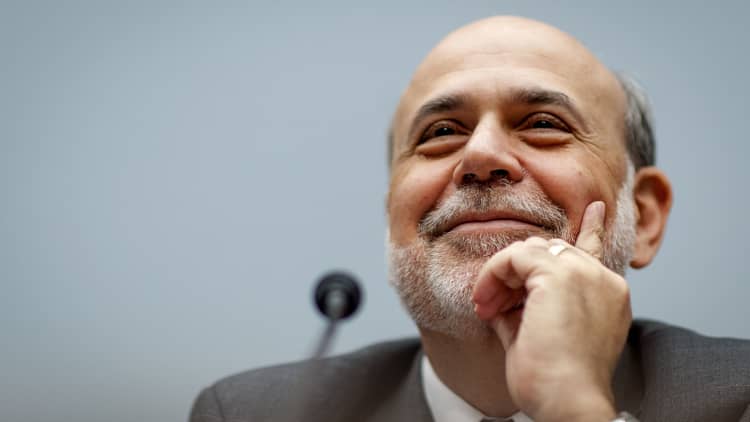Nine years ago, the United States was deep into a financial crisis.
GDP (gross domestic product) growth was contracting at the fastest rate in 50 years, and the economy was losing hundreds of thousands of jobs each month.
The Fed funds target rate — the interest rate charged by commercial banks to other banks who are borrowing money — was already close to zero. But the U.S. central bank took unprecedented steps to lower interest rates even further. The Fed launched quantitative easing (QE), ultimately buying trillions of dollars of government bonds and mortgage-backed securities.
Between 2008 and 2015, the Fed's balance sheet, its total assets, ballooned from $900 billion to $4.5 trillion.
Fed officials contend their unconventional policy actions saved the U.S. from a crisis worse than the Great Depression.
Joseph Gagnon, a senior fellow at the Peterson Institute for International Economics, who worked at the Fed and helped launch QE in 2008, said research shows quantitative easing succeeded in lowering long-term interest rates.
"It's rare in economics that you get such an overwhelming answer that we can all agree on," Gagnon said.
But Gagnon said there is more disagreement when it comes to the effects of QE and lower interest rates on growth and inflation.
GDP growth has bounced back since 2008 and has held steady near 2 percent.
Many investors feared QE would cause runaway prices, but inflation has remained stubbornly low.
The Fed's low-interest rate policy made it inexpensive for the government to continue to borrow and spend. U.S. public debt is near $20 trillion and some fear that bubble could burst as the Fed steps out of the government market.
Nine years after the Fed launched QE, the central bank is once again entering new territory as it begins to wind down its trillion-dollar balance sheet.
As of October, the Fed will let billions of dollars of securities mature each month without reinvesting them. It will gradually increase the amount of maturing bonds each quarter over the next year. HSBC Chief Economist Kevin Logan said this process is new territory for the Fed.
"This is a big experiment," Logan said. "It's something that's never been done before."



